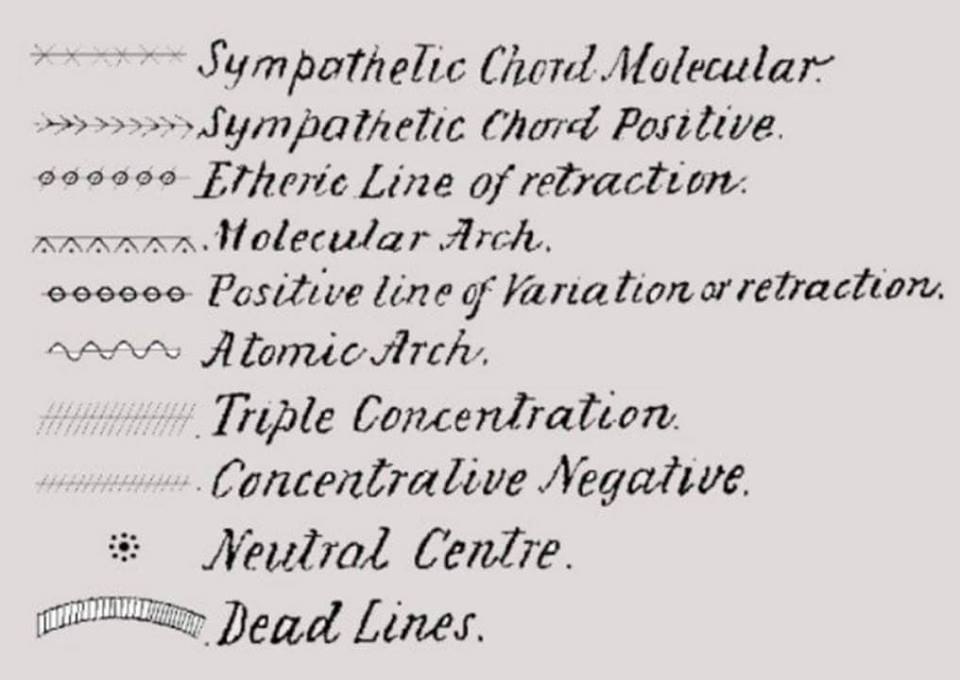
See Also
07 - Chart Showing the Conditions Governing Harmonious Chords
09 - Chart Defining the different Chord Associations
12 - Chart of Differentiation of Setting Chords on Vibratory Bar
14 - Chart with Symbols Defining the relative Simple and Compound Sympathetic Association
Atomic Arch
Chord of Mass
Concentrative Negative
Dead Lines
Etheric Line of Retraction
Figure 18.03 - Keely Chart Showing Acoustic Resonance of the Brain Chord
Molecular Arch
Neutral Center
Positive Line of Variation or Retraction
rate of vibration
Sympathetic Chord Molecular
Sympathetic Chord Positive
Sympathetic Coincidence
Sympathetic Oscillation
Triple Concentration
13.38 - Theory of the Induction of Sympathetic Chords to Excite Rotation by Vibraphonic Trajection to and from Centers of Neutrality on Revolving Globe
14.13 - Full Harmonic Chord
19.02 - Theory of the Induction of Sympathetic Chords to Excite Rotation
8.21 - Signature same as Chord
8.24 - The Dance of Concord and Discord
8.26 - Law of Force
8.27 - Law of Sympathetic Oscillation
8.29 - Law of Vibrating Atomolic Substances
8.31 - Law of Transmissive Vibraic Energy
chord center
Chord of Mass
chord of sympathy
chord of the mass
Chord
chord-setting
coincident chord of sympathy
coincident sympathetic chord
Concordant Chord Settings
Concordant Chords of Sympathy
Factor-chord
Figure 1.1 - Chord Signatures of Brain Convolutions
Figure 18.03 - Keely Chart Showing Acoustic Resonance of the Brain Chord
Figure 8.7 - Varying Degrees of Chordal Harmony and Discord
Full Harmonic Chord
Laws of Music
Laws of Ratios
Sympathetic Chord Molecular
sympathetic chord of unity
Sympathetic Chord Positive
sympathetic chord
THEORY OF THE INDUCTION OF SYMPATHETIC CHORDS TO EXCITE ROTATION BY VIBROPHONIC TRAJECTION TO AND FROM CENTERS OF NEUTRALITY ON REVOLVING GLOBE
transmissive chord
transmissive sympathetic chord
